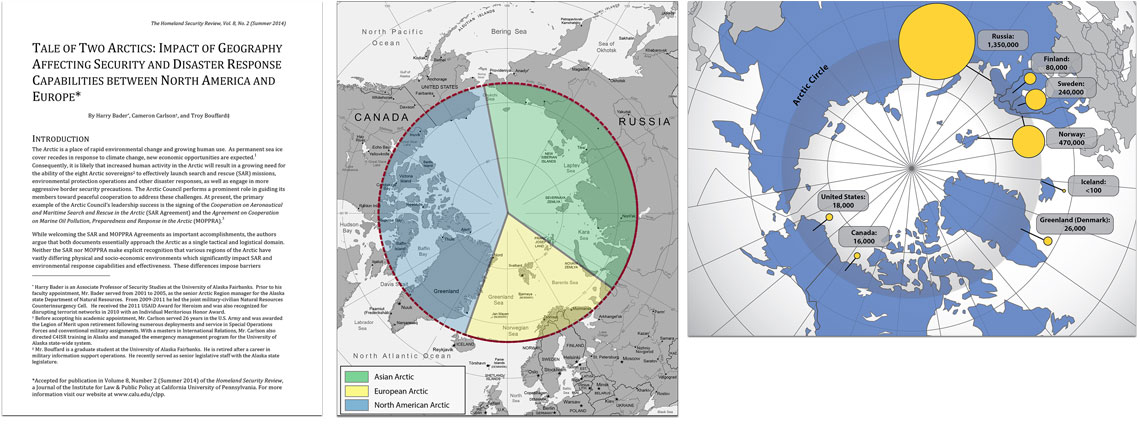Outreach

Tale of Two Arctics:
Impact of Geography Affecting Security and Disaster Response Capabilities between
North America and Europe
By:
Harry Bader,
Cameron D. Carlson,
Troy J. Bouffard
Outlet:
Homeland Security Review Date:
Summer, 2014
Download
Harry Bader,
Cameron D. Carlson,
Troy J. Bouffard
Outlet:
Homeland Security Review Date:
Summer, 2014
Download
While welcoming the SAR and MOPPRA Agreements as important accomplishments, the authors
argue that both documents essentially approach the Arctic as a single tactical and
logistical domain. Neither the SAR nor MOPPRA make explicit recognition that various
regions of the Arctic have vastly differing physical and socio‐economic environments
which significantly impact SAR and environmental response capabilities and effectiveness.
These differences impose barriers especially to the United States (U.S.) and Canada
in meeting their obligations to provide adequate and effective SAR and MOPPRA responses
in comparison to those countries comprising the European Arctic. The authors recommend
that the U.S. and Canada carefully consider what types of
capability investment is warranted, balancing cost with reasonable levels of improvement. As the article seeks to explain, the barriers in the North American Arctic simply preclude the ability of the U.S. and Canada, either singly or in concert, to attain capabilities that can approximate that which is achievable in Europe. Consequently, it is essential that the U.S. and Canada develop a shared vision regarding what the two nations consider to be adequate and effective. This vision must be different than that which is contemplated by its European partners and the physical challenges unique to the North American Arctic. This paper argues further that the primary effort by the U.S. and Canada in North American Arctic security, environmental protection, and search and rescue strategy focus on prevention measures, rather than response capability, in regard to infrastructure and asset investment.
capability investment is warranted, balancing cost with reasonable levels of improvement. As the article seeks to explain, the barriers in the North American Arctic simply preclude the ability of the U.S. and Canada, either singly or in concert, to attain capabilities that can approximate that which is achievable in Europe. Consequently, it is essential that the U.S. and Canada develop a shared vision regarding what the two nations consider to be adequate and effective. This vision must be different than that which is contemplated by its European partners and the physical challenges unique to the North American Arctic. This paper argues further that the primary effort by the U.S. and Canada in North American Arctic security, environmental protection, and search and rescue strategy focus on prevention measures, rather than response capability, in regard to infrastructure and asset investment.


